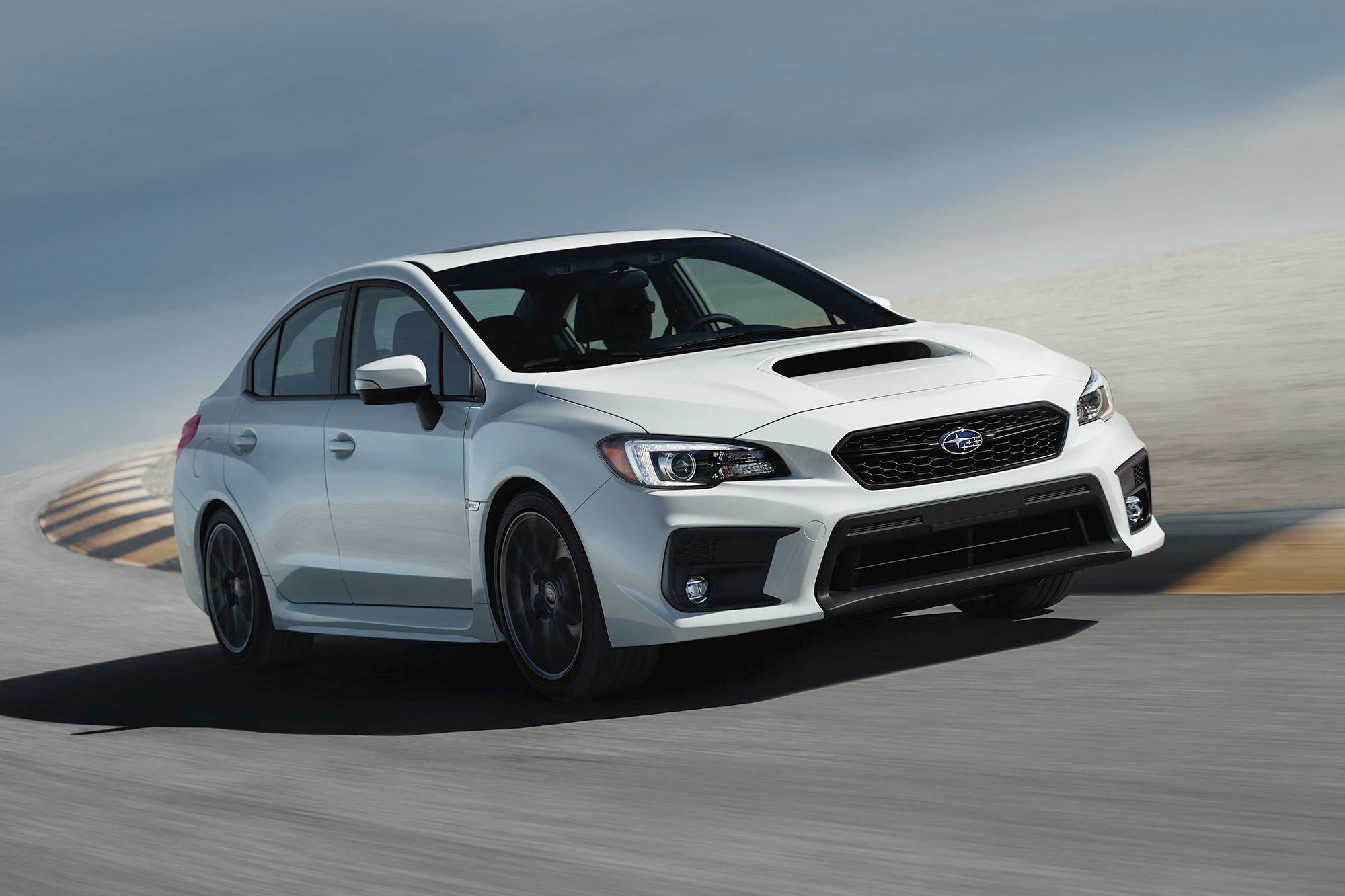What Is Torque Vectoring?
These systems help aid cornering ability and general stability.
 Subaru
Subaru
When driving in a straight line, both wheels on an axle travel at the same speed. But when the steering wheel is turned, the car's outside wheel must travel a greater distance during the corner, so it must spin faster than the inside wheel.
This difference in ground covered is easily illustrated by the staggered start mandated for the 400-meter dash. To ensure every competitor runs the same distance, the runners on the outside lane line up ahead of those on the inside lane.
To accommodate the difference in speed, and prevent the slower inner wheel from slipping, vehicles use a differential. This component employs a system of gears which allow each wheel to spin at different speeds. Performance cars often use a more complex limited-slip differential to better manage grip. Torque vectoring is the next step up.
What Torque Vectoring Does
Torque vectoring is an active process that delivers precise power to individual wheels on either side of the vehicle.
Torque vectoring systems work in concert with a vehicle's engine control unit, anti-lock brakes, and traction control system. When sensors at each wheel detect wheel slippage, they tell the system to reduce power to that wheel and send it to the opposite one.
Depending on the design, either more torque is sent to the outside wheel or the brakes are applied to the inside wheel. Either way, the improved distribution of torque helps pull the vehicle around the corner.
The Benefits of Torque Vectoring
Traction is essential for both daily commuting and performance driving scenarios, and torque vectoring helps maximize grip when turning. It can also reduce oversteer, where the back end wants to slide, and understeer, where the car isn't turning to the degree desired by the driver.
Torque vectoring can make off-road driving more effective as well because the sensors constantly monitor wheel slip at each corner and adjust power delivery accordingly. When traction moves from the wheels that slip to the wheels that grip, the vehicle will move forward more predictably and with better stability.
Many Types of Vehicles Use Torque Vectoring
While it's becoming a more common feature, torque vectoring is not a new concept.
In the 1990s, Honda featured the technology — dubbed the Active Torque Transfer System — on its sporty Prelude, and Mitsubishi's rally-inspired Lancer Evolution debuted an advanced version in 2009.
Torque vectoring systems are found on many of today's all-wheel-drive performance vehicles, including the Subaru WRX, Volkswagen Golf R, and Toyota GR Corolla. Additionally, crossovers such as the Acura MDX, Alfa Romeo Stelvio, and the Mazda CX-5, use torque vectoring to make them more sure-footed. Land Rover also utilizes brake-based torque vectoring on its flagship Range Rover and rugged Defender.
Torque vectoring isn't confined to internal combustion vehicles, either, as electric vehicles such as the Porsche Taycan, Subaru Soltera, and Polestar 3 all offer the technology.
Written by humans.
Edited by humans.
 Connor Hoffman
Connor HoffmanConnor Hoffman is a writer and editor based in Kansas City. Prior to becoming a freelance writer, he was an editor at a national car magazine and worked in communications at a major automaker. He loves off-roading and camping in his 4Runner, golfing (poorly), and shredding on his mountain bike.
Related articles
View more related articles